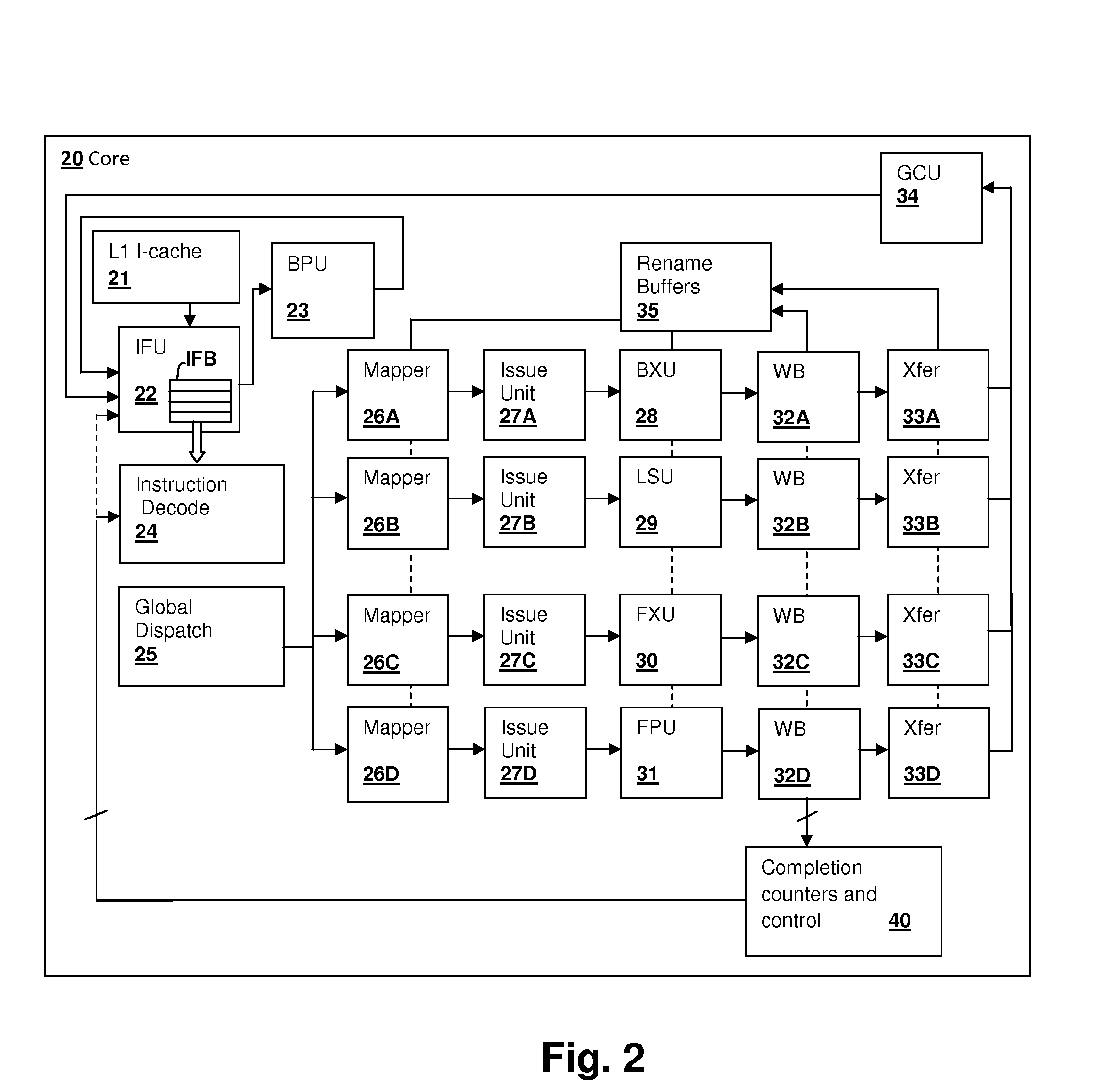Thread completion rate controlled scheduling
a scheduling and completion rate technology, applied in the field of processing systems and processors, can solve the problems that the events on which the priority control is based can be difficult to measure, and achieve the effects of improving processor throughput, facilitating processing efficiency, and high completion rates
- Summary
- Abstract
- Description
- Claims
- Application Information
AI Technical Summary
Benefits of technology
Problems solved by technology
Method used
Image
Examples
Embodiment Construction
[0017]The present invention relates to simultaneous multi-threaded (SMT) processors and processing systems in which allocation of pipeline resources is controlled according to a completion rate of instructions in the pipeline(s) for multiple threads. An indicator of completion of instructions, which may be a measurement of the occurrence of commit phase indications for each thread, is used to control the amount of pipeline resources allocated among the multiple threads, for example by controlling the instruction fetch and / or decode rate for each thread. The control scheme can be used to enforce a fairness scheme that allocates resources equally, according to a thread priority schedule, or the control scheme can favor threads that have a high completion rate in order to promote efficient use of processing resources. For example, threads with many stall events can clog the pipelines, reducing processor throughput. By increasing the pipeline resources allocated to other threads, proces...
PUM
 Login to View More
Login to View More Abstract
Description
Claims
Application Information
 Login to View More
Login to View More - R&D
- Intellectual Property
- Life Sciences
- Materials
- Tech Scout
- Unparalleled Data Quality
- Higher Quality Content
- 60% Fewer Hallucinations
Browse by: Latest US Patents, China's latest patents, Technical Efficacy Thesaurus, Application Domain, Technology Topic, Popular Technical Reports.
© 2025 PatSnap. All rights reserved.Legal|Privacy policy|Modern Slavery Act Transparency Statement|Sitemap|About US| Contact US: help@patsnap.com



